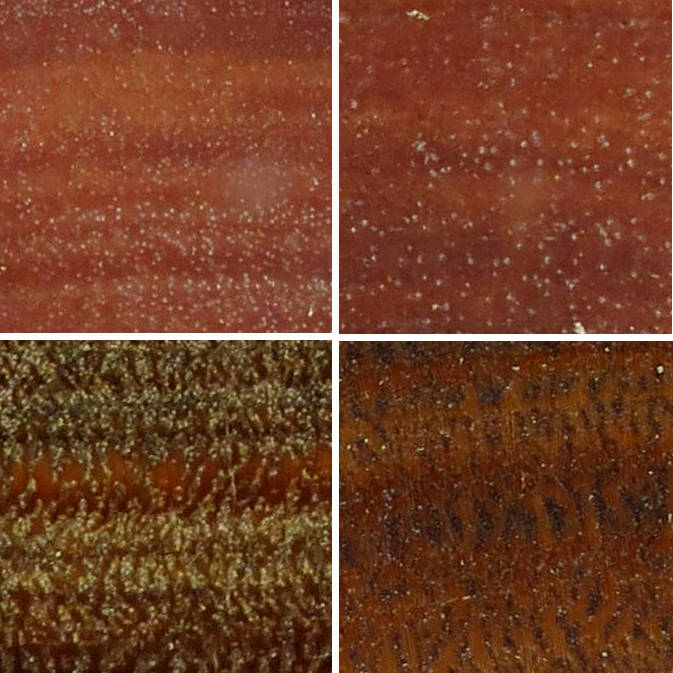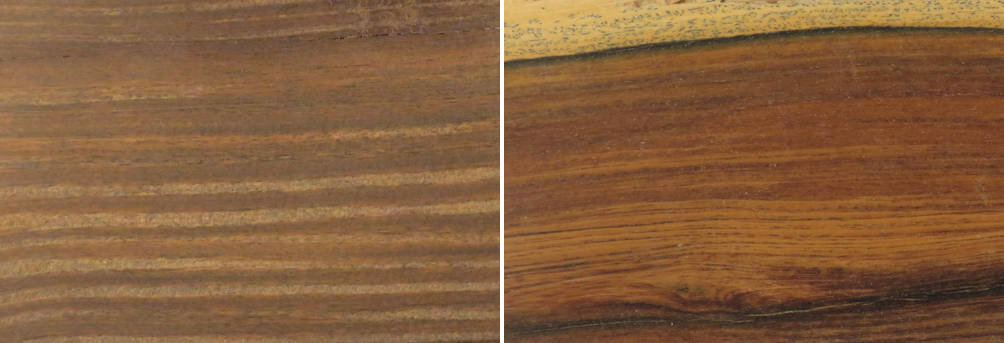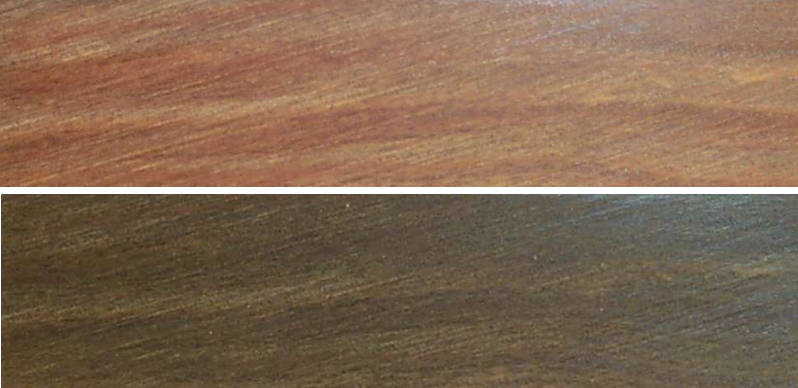open main page for all woods open page 2 for articles
LIGNUM VITAE vs VERAWOOD
Lignum vitae (Guaiacum spp.) and verawood (Bulnesia arborea and Bulnesia sarmientoi) are often confused in the USA. Both are very hard and dense and both are very waxy and will clog up sandpaper very quickly. Lignum is slightly heavier than verawood but both sink in water and their densities are so close as to not be a reliable distinguishing characteristic. There is sometimes a superficial similarity of face grain, BUT as it turns out, they are not similar in end grain characteristics and therefore are easy to distinguish if you can get at the end grain. The pics directly below show four 1/4" square end grain closeups. The upper two are lignum vitae and the lower two are verawood.
As you can see, the lignum vitae has sparse, randomly spaced, solitary pores in a classic diffuse porous configuration. The verawood has a higher pore density and more importantly the pores are arranged in dendritic groups and look nothing like the arrangement in lignum vitae.

Also, the face grain of verawood almost always strongly exhibits the classic "feathering" characteristic of interlocked grain, like this:

Lignum vitae, on the other hand, sometimes shows a what appears to be a slight interlocked pattern, as seen on the left in a quartersawn piece, but I'm not sure this is interlocked grain and in any case it tends to be more subdued than the obvious interlocking in verawood. Often lignum vitae is just smooth as seen on the flat cut piece on the right.

And finally, on the color, although it is NOT a completely reliable metric, verawood (on the left) is often more greenish and lignum (on the right) is generally reddish. Again, I emphasize, the color range is very similar.

My own experience with color in verawood is that it sometimes starts off brown and then turns green and other times starts off green and turns reddish brown. Both of those are exhibited on the main site's verawood page. I have no explanation for this radical difference in color change except that perhaps it is the difference between Bulnesia arborea and Bulnesia sarmientoi. Here's an example of it being reddish brown when freshly sanded and then deep green after exposure:

And, here's a link to a discussion of a color change in verawood where it goes from green to brown:
LINK




